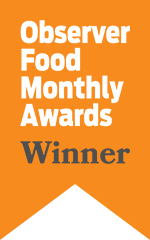The Cornish Gouda Story
This trip revived something I did a lot in the early days of The Cheese Shed: visiting cheese makers to find out a little about their story, what makes them tick. It’s always interesting - after all, you’re dealing with people who are motivated by the desire to make something with real quality and character. They’re trying to make living, for sure, but it’s always about more than that. In this case it proved be about much more: survival.
Joost and Anne-Marie Spierings brought their family from Holland to Cornwall in 1998, buying a dairy farm near Looe. But ten years or so later, the perpetual agony of falling milk prices meant the farm was on the brink. The Spierings loved farming, and had fallen in love with Cornwall ... but they needed to find some way to make the farm viable. And this was where younger son Giel, then 17, made a suggestion. They knew that gouda was popular in the UK, but were also very aware that the version sold over here in no way represented the best of that cheese. Suppose they used their milk to make a really top quality gouda? It would make economic sense, capitalize on their Dutch heritage, and be the first of its kind in the UK. And so Giel set off back to Holland to talk to a couple of relatives involved in cheese making, and began reading everything he could find on the subject. As a practical person, however, he was soon pitching in to the actual making, and within a year the first gouda appeared.
Fast forward four years, and I’m walking into the making room at Talvan Farm. It’s mid-morning, and Giel’s assistant Rob is busy scooping curds out of the large stainless steel vat and into the big plastic moulds. The sloppy mass of what could be uncooked pastry is what will become - in six months or so - a 10kg cheese. It’s a labour-intensive process, with each cheese (and there are hundreds in the maturing room next door) needing a great deal of attention. But Giel wouldn’t have it any other way: he knows that to make really high-quality cheese this is just how it needs to be. Cornish Gouda (in Holland it’s pronounced how-da, with a guttural ‘h’) is mostly made in the giant 10kg size, with a few smaller 800-900g ‘baby’ cheeses available. Strengths range from medium (4 months) to mature (a year), and alongside the regular cheese there are versions with Italian herbs, one with fenugreek and a very unusual (and popular) honey and clover.
You couldn’t fail to be struck by what Giel has achieved here. At 22 he has set up and now runs a successful business with a great product. Rent is paid to his parents for the space and a fair price is paid for the milk of around 60 of the farm’s 100 cows, meaning the farm is secure. The dairy is full of interesting ingenious details, like the green energy log burner which is used to heat the milk for pasteurisation, and the gleaming network of ducts and perforated pipes (all his design) which are used to keep air moving around the maturing room. And the long rows of shelves packed with beautiful golden-waxed cheeses are truly beautiful to look at.
And the future? Well, they could make more cheese, and they want to. Cornish Gouda is still hard to get outside the Westcountry (except via The Cheese Shed of course!), and there’s the milk of those other 40 cows available. Having said that, Giel doesn’t believe the operation could get too big, without quality being compromised. There could be a solution, though. Would it be possible for the Cornish Gouda recipe and method to be licensed by other farmers in the area? People facing the same intractable problems of low milk price and for whom the opportunity to make an established product could be a low-risk way of moving forward. Giel would maintain quality control and the cheese would go out with the Cornish Gouda name. It’s a model I’ve not come across before, but a typically bold and inventive idea from a very impressive and energetic individual. I wouldn’t bet against this working.








